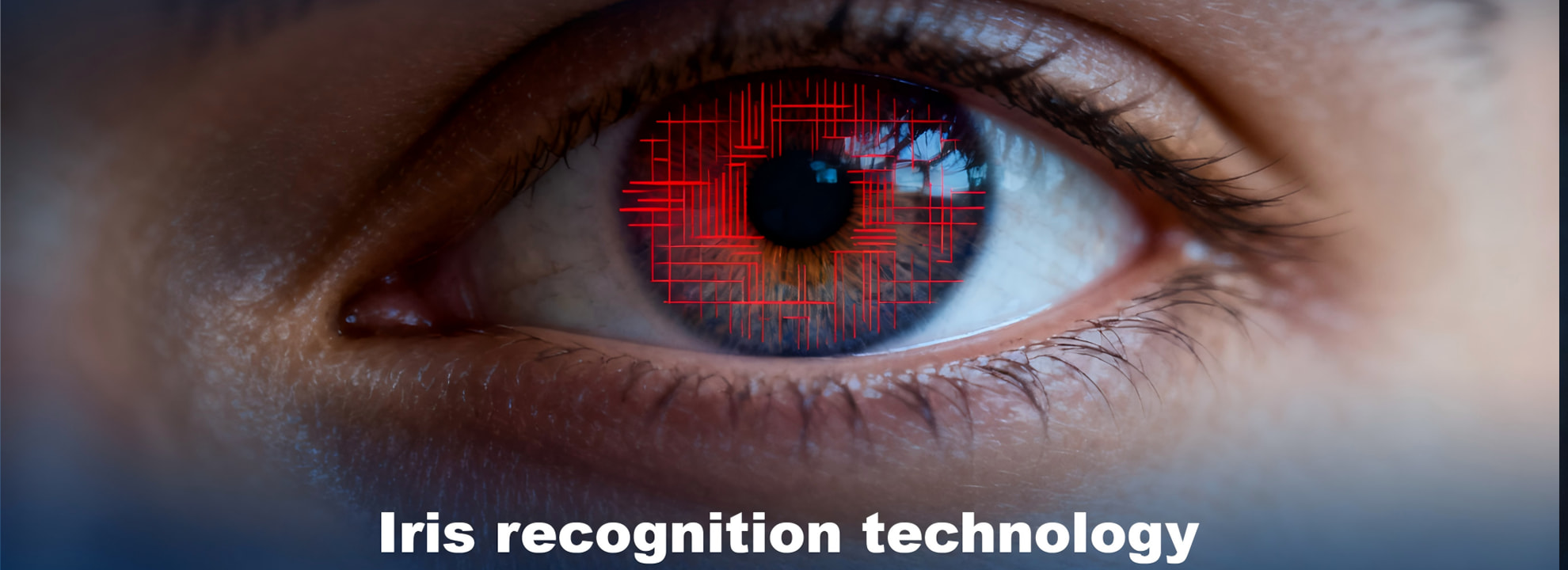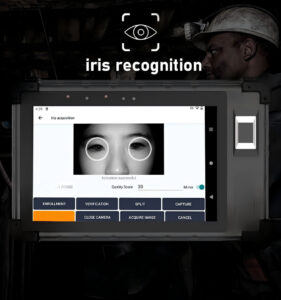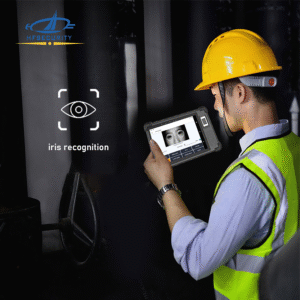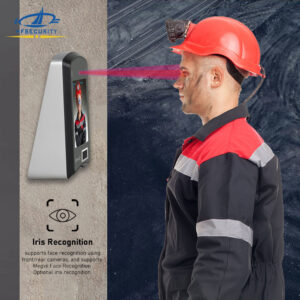As digital security evolves, biometric identification methods have become a cornerstone of authentication. Among them, iris recognition technology stands out as one of the most accurate, secure, and contactless solutions. By analyzing the unique iris patterns within the human eye, this technology ensures precise identity verification across industries ranging from border security to healthcare. Understanding what iris recognition technology is, its working principles, benefits, limitations, and applications can help organizations evaluate its role in modern security systems.
What is Iris Recognition Technology?
Công nghệ nhận dạng mống mắt is a biometric identification system that scans and analyzes the intricate details of the iris—the colored ring surrounding the pupil. Each individual’s iris contains unique textures, crypts, rings, and freckles that remain stable throughout their lifetime, making it a powerful identifier. Unlike fingerprint recognition or facial recognition technology, iris recognition is extremely resistant to duplication and spoofing. Because the iris is protected by the cornea, it is less likely to be damaged by environmental factors, ensuring long-term reliability for secure authentication systems.
How Does Iris Recognition Technology Work?
Iris recognition technology operates through a combination of biometric imaging, mathematical modeling, and advanced matching algorithms, ensuring both speed and reliability in identity verification. The entire process is designed to be non-invasive, contactless, and highly secure, making it ideal for applications in access control, border security, healthcare, and financial authentication. The key stages include:
1. Image Acquisition
The process begins with a specialized iris scanner or near-infrared camera that captures a high-resolution image of the eye. Unlike ordinary cameras, these biometric devices are engineered to function effectively in low-light conditions, varied environments, and at different distances, ensuring accurate iris detection without physical contact. This step guarantees a fast and user-friendly experience.
2. Segmentation and Pattern Analysis
Once the image is captured, the system performs segmentation to precisely isolate the iris region from surrounding structures such as the pupil, sclera, eyelids, and eyelashes. Advanced image-processing algorithms then analyze the iris’s unique patterns, textures, crypts, furrows, and radial striations. These features are stable throughout a person’s lifetime, making iris recognition one of the most reliable biometric identification methods.
3. Template Encoding
After extracting the iris features, the data is transformed into a digital biometric template using cryptographic and mathematical encoding techniques. This template is compact, secure, and cannot be reverse-engineered to recreate the original eye image, ensuring data privacy and biometric security compliance.
4. Matching and Verification
In the final step, the system compares the newly generated iris template against stored biometric records in a database. Powerful pattern-matching algorithms ensure extremely high accuracy with minimal False Acceptance Rate (FAR) and False Rejection Rate (FRR). This enables real-time identity authentication in both small-scale systems (like workplace access) and large-scale deployments (such as e-passports, border control, and national ID programs).
Overall, iris recognition works seamlessly within seconds, offering a scalable, secure, and efficient biometric solution for modern identity management systems.
Key Features of Iris Recognition Technology
Iris recognition offers a range of unique advantages that make it one of the most accurate, secure, and scalable biometric authentication methods in the world. Below are the key features:
Extreme Accuracy
Iris recognition achieves accuracy rates above 99%, with one of the lowest False Acceptance Rates (FAR) and False Rejection Rates (FRR). This high precision makes it suitable for mission-critical environments such as airports, government facilities, and financial institutions.
Contactless and Hygienic Authentication
Since iris recognition does not require physical contact, it provides a fast, hygienic, and user-friendly authentication process. This is especially valuable in healthcare, high-traffic workplaces, and public transportation systems, where efficiency and hygiene are essential.
Long-Term Stability and Reliability
The unique iris pattern remains stable throughout an individual’s lifetime, unlike fingerprints or facial features that may change due to aging, environment, or injury. This ensures consistent and long-lasting identification accuracy, reducing the cost of re-enrollment in large-scale biometric deployments.
Robust Security and Anti-Spoofing
With liveness detection and advanced image-analysis algorithms, iris recognition effectively resists attempts at forgery using photos, videos, or cosmetic contact lenses. This provides high security against spoofing and identity fraud, making it one of the most tamper-resistant biometric solutions.
Scalability for Large-Scale Deployments
Iris recognition systems are capable of supporting millions of biometric records while maintaining fast one-to-many matching performance. This scalability makes it ideal for national ID programs, e-passport systems, and border control solutions.
Speed and User Convenience
Modern iris recognition devices can capture and verify an iris pattern in just a few seconds, even in low-light or dynamic environments. This ensures a seamless user experience without delays, enhancing adoption in smart access control, banking authentication, and mobile security applications.
Advantages of Iris Recognition Technology
Unmatched Security – Difficult to forge, clone, or share, unlike passwords or access cards.
Fast Processing Speed – Can authenticate individuals in under two seconds, even in high-traffic environments.
Long-Term Efficiency – Enrollment is typically a one-time process, with minimal need for updates.
Convenience and Hygiene – Fully contactless, making it ideal for healthcare and public spaces.
Versatility – Works well in multimodal biometric systems, combined with fingerprint or facial recognition for layered security.
Disadvantages of Iris Recognition Technology
High Implementation Cost – Advanced cameras, sensors, and software increase system expenses compared to other biometric methods.
Lighting Challenges – Bright sunlight or poor indoor lighting can affect capture quality, though modern systems use infrared illumination to mitigate this.
Privacy Concerns – As with all biometric data, strict regulations and encryption are essential to protect sensitive information.
User Perception – Some individuals may feel uncomfortable with eye-based scanning, which can impact adoption rates.
Applications of Iris Recognition Technology
Because of its accuracy and reliability, iris recognition technology applications extend across multiple industries:
Government and National ID Systems – Used in large-scale identity management programs, voter registration, and social benefit distribution.
Airports and Border Control – Enables seamless passenger verification, reducing waiting times and enhancing security.
Các dịch vụ tài chính – Protects against fraud in banking, mobile payments, and ATM transactions.
Ngành chăm sóc sức khỏe – Provides secure patient identification, preventing medical record errors and identity theft.
Corporate Access Control – Used in offices, research labs, and data centers to prevent unauthorized entry.
Thực thi pháp luật : – Helps track and verify identities in criminal investigations and prisoner management.
Phần kết luận
So, what is iris recognition technology? It is a cutting-edge biometric system that leverages the unique and permanent patterns in the human iris to deliver secure, fast, and highly reliable identification. With its accuracy and contactless design, it is becoming a cornerstone of modern access control, national identification, and financial security systems. While challenges such as cost and privacy remain, the advantages often outweigh the limitations, making iris recognition one of the most promising technologies in the field of biometrics.
Câu hỏi thường gặp
Yes. Iris recognition systems use infrared or near-infrared light, which is safe and non-invasive for human eyes.
Facial recognition relies on facial features, while iris recognition scans the intricate patterns of the iris. Iris recognition is generally more accurate and harder to spoof.
Yes. Modern iris scanners are designed to capture clear images even if users wear glasses or contact lenses.
Iris recognition has a lower false acceptance rate than fingerprints, making it more secure. It is also less likely to degrade over time.
It is widely used in airports, border control, national ID systems, banking security, hospitals, and corporate access control systems.
Liên hệ chúng tôi
We would love to speak with you.
Feel free to reach out using the below details.





